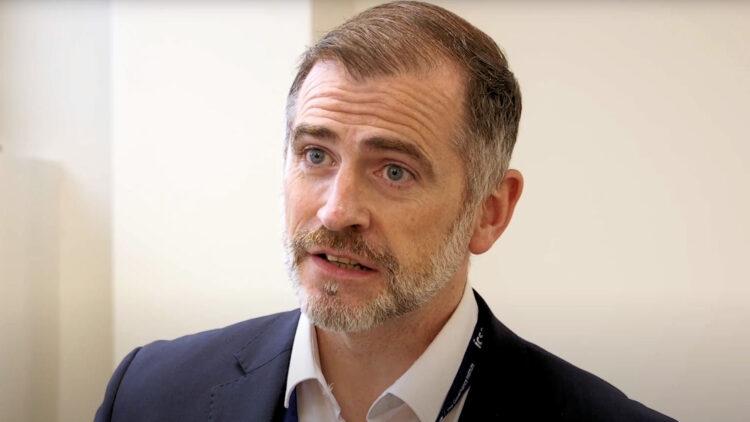What do you want in life? Hmm, let me see… I want to be happy. Great, that’s a positive intention, isn’t it? Nothing wrong with wanting to be happy, surely? And you’d be right.
Following on from last week’s International Week of Happiness at Work, Chartered Coaching Psychologist Aidan Kearney explores how being happy can help us to feel anchored, less stressed, and how, in a work context, this feeds into a more positive work culture providing the bedrock for trust and productivity.
Let’s start by unwinding our discussion a little. Let’s take a look at our initial statement… I want to be happy.
It’s a commendable goal, but what does this actually mean? What constitutes being happy and how do we go about achieving this state of being?
There’s a problem with the idea of happiness as an end point, as a goal in its own right. Happiness is not a tangible, measurable destination; it’s a feeling. It’s what we call in Acceptance and Commitment Therapy, an ’emotional goal’, and there’s an issue with emotional goals, because many things can influence how we feel; all too frequently many of which are beyond our control.
Consider the logic of this for a moment. In a world filled with challenges like global instability, the climate emergency, economic uncertainties, and personal struggles, it becomes evident that external factors can significantly affect our happiness. Therefore, setting a goal of ‘wanting to be happy’ might inadvertently set a trap for ourselves because we’re aiming for something that can be influenced by numerous uncontrollable factors.
To achieve happiness, we must first understand ourselves, our motivations, and the practical steps we can take to support our feelings of happiness.
However, this doesn’t mean that wanting to be happy is wrong. The key lies in how we approach it. To achieve happiness, we must first understand ourselves, our motivations, and the practical steps we can take to support our feelings of happiness. This involves shifting from emotional goals to behavioural goals that align with our happiness. An example might be, having more open communicative and productive relationships. To do this we might set practical behavioural goals around finding out what’s getting in the way of this. This might mean learning some new skills about emotional self-management, maybe developing better listening skills, learning to understand and empathise with the perspective of others.
In essence, achieving happiness is about understanding what we mean by ‘being happy’, what components feed into this and then deconstructing how we might create the environment conducive to happiness and taking practical steps towards it.
Creating Happy Workplaces
Now, let’s shift our focus to the workplace. How do we create those happy workplaces where people want to be; want to interact; want to work collectively; want to stay and want to give their all? The answer lies in understanding what employees need to feel settled, valued and accepted, and able to manage the stress and uncertainties that change and a volatile and fast-paced world might produce.

For this it’s worthwhile considering two influential psychological theories; Self-Determination Theory and the SCARF Model.
Self-Determination Theory (Deci and Ryan, 1985)
Self-Determination Theory is firmly grounded in evidence and emerged from the study of motivation and behaviour. It revolves around three core constructs; autonomy, relatedness and competence. Autonomy reflects the importance of having control over one’s circumstances and the ability to input to and change the world around us. It’s essential for employees to feel they have a say in their work and that their input matters.
Anyone who has led a change project knows how psychologically challenging it can be when people feel as if the changes are being ‘done to them’, and they cannot impact their direction of travel. This is a breeding ground for stress reactions to emerge and resistance to change.
Relatedness correlates with our deep human need to be accepted by and connected with others. Building positive relationships at work can significantly impact an employee’s wellbeing. When we feel valued and part of a supportive team, our overall happiness increases.
Competence relates to our belief in our ability to perform task effectively. A culture that encourages growth, learning, and skill development contributes to a sense of competence and confidence amongst employees.
The SCARF Model (Rock, 2008)
Along a similar vein, Rock’s SCARF model proposes that the elements that influence workplace wellbeing are Security, Certainty, Autonomy, Relatedness and Fairness. These elements align closely with the principles of Self-Determination Theory and provide a comprehensive framework for building psychologically safe workplaces and supporting workplace wellbeing.
So, coming back to our entry point about happiness, how do we then create happy workplaces? The answer again is, break it down. Don’t see happiness itself as the goal but rather view the elements and goals that could be delivered which give happiness the chance to flourish:
Foster Autonomy: Encourage employees to participate in decision-making processes and crucially in change processes. Consider how we can consult, involve, listen and appreciate difficulty, concerns and empathise for what people may consider they are losing in any process.
 Enhance Relatedness: Think about creating an environment where people feel accepted, valued, and connected with their colleagues. This takes interest and being inquisitive about what they need. It could be fluid and dynamic, changing from time to time so we need, as leaders, to be flexible and attuned to this in our approach.
Enhance Relatedness: Think about creating an environment where people feel accepted, valued, and connected with their colleagues. This takes interest and being inquisitive about what they need. It could be fluid and dynamic, changing from time to time so we need, as leaders, to be flexible and attuned to this in our approach.
Support Competence: We need to create the scenario where staff develop and feel supported to do so, investing time, energy and resources in growing feelings of competence. This requires a culture of healthy challenge, acceptance and demonstration of vulnerability and regular, timely and meaningful feedback.
Ensure Security: Communication channels should be open, transparent and maintained. Even when external factors are unfair, this supports the knowledge that within the team, fairness exists.
Promote Fairness: And importantly we need to demonstrate real and consistent integrity. If we say we are going to do something we do it, follow through even when it’s difficult or challenging. Do not talk about certain values being important and then fail to live them through; that way trust simply leaves the building.
So, happiness, is easy, isn’t it? No, it’s definitely not easy, but that doesn’t mean we shouldn’t try to create the environment where it can exist. To do this we need to set clear behavioural goals, measure them and know what delivery of them looks like. That way we create the space in which happiness can exist.
Simple.
Aidan Kearney (main picture) BSc(Hons), PgDip, MSc, CPsychol is a BPS chartered coaching psychologist and expert in high performance thinking and behaviour. His company, Malleable Mind, is dedicated to helping people overcome challenges by harnessing their power for adaptive change. He works with individuals, teams and organisations in business, public sector and elite sport to enable them to reach their true potential. Please feel free to reach out to Aidan on email.
Click here to go to our Wellbeing section …
…
… and click here to subscribe to our daily newsletter – meaning you will never miss a thing.














